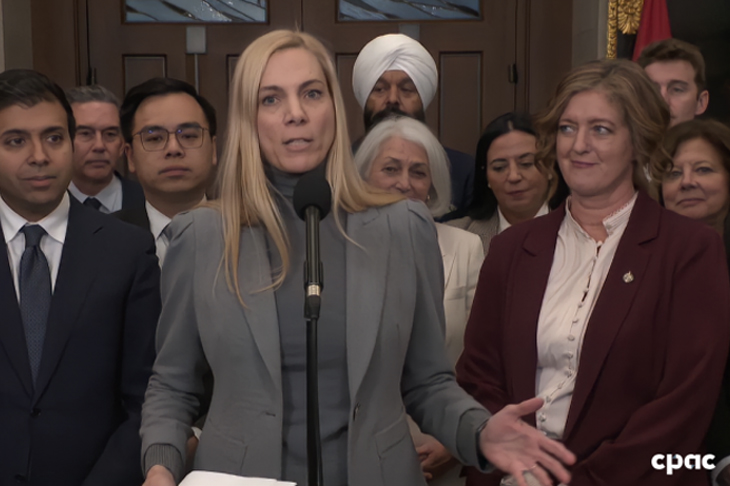TORONTO – Yesterday afternoon, the regulatory panel at the Competitive Network Operators of Canada’s (CNOC) 2022 Canadian ISP Summit delved into currently hot topics including rural broadband subsidies, affordability, competition and site blocking.
And while the panel, moderated by Bryson Masse (above, left), CNOC regulatory and communications adviser, was titled “Zen and the Art of Regulatory Patience”, the panelists gave the distinct impression the time for patience has come and gone.
Madeleine Redfern (second from right), COO of CanArctic Inuit Networks Inc. spoke about her experience living in Canada’s north where she pays $1,000 per month for unreliable and slow Internet. She noted that while the urban areas of the country are seeing 5G networks being built, in the north they still struggle to get basic connectivity.
Redfern further explained navigating rural broadband subsidy programs “hasn’t been easy to say the least.”
Rural broadband programs are supposed to help ensure all Canadians have access to speeds of at least 50 Mbps download and 10 Mbps upload, but they are not without flaws, according to Redfern.
The federal government’s Universal Broadband Fund “really picks one winner and everyone else is a loser because it won’t fund any redundancy,” she said, adding that while she understands the rationale is that there is only so much money, at the same time there are significant investments being made to build 5G networks in urban centres.
“What about being able to call the RCMP during an emergency or the fire department – it’s just, it’s really, really disproportionate,” Redfern said. “It doesn’t facilitate competition, it shuts out absolutely new companies that want to get in… it shuts out Indigenous companies who have largely been kept out of this sector and industry.”
Speaking more generally, Yuka Sai (right), staff lawyer with the Public Interest Advocacy Centre (PIAC), said the current regulatory environment has not been good for consumers or competition.
“The recent trend of mergers in the telecom industry is really symptomatic of a pretty unfriendly regulatory environment for competitors,” she said, mentioning for example, the CRTC’s recent decision on regulated mobile virtual network operators, which she argued was not helpful because of a requirement to own spectrum.
“It doesn’t have to be this way,” she said.
Sai also talked about a study PIAC recently did on advertised broadband Internet speeds, which is an update to a report they did 10 years ago.
The study compares Canadian practices around advertising speeds to those internationally in places such as Australia and the U.K., Sai said. They found that while in Canada speeds are advertised as being “up to” a certain speed, other jurisdictions now have guidelines that require a range of average tested speeds during peak periods or a minimum guaranteed speed, which benefits consumers.
Site blocking was another issue brought up during the panel discussion. Georgia Evans (second from left), policy and advocacy analyst with the Canadian Internet Registration Authority (CIRA), brought up the federal court’s order to block access to websites operated by GoldTV because of copyright violations and argued Internet service providers should be turned to last to resolve content-related issues.
“It’s appropriate to block for technical threats that pose a threat to the network but when it comes to blocking for website content abuse and matters of copyright then blocking should be a matter of absolute last resort,” she said.
“The ISP should be the last person to block a website because when you interfere with a DNS and the technical standards that uphold the Internet it’s very disproportionate – an analogy is killing a fly with a hammer…”
Bell would presumably disagree. The company recently asked the Federal Court to order third-party Internet service providers to block websites of streamers it says are likely to illegally broadcast FIFA World Cup matches next month.









